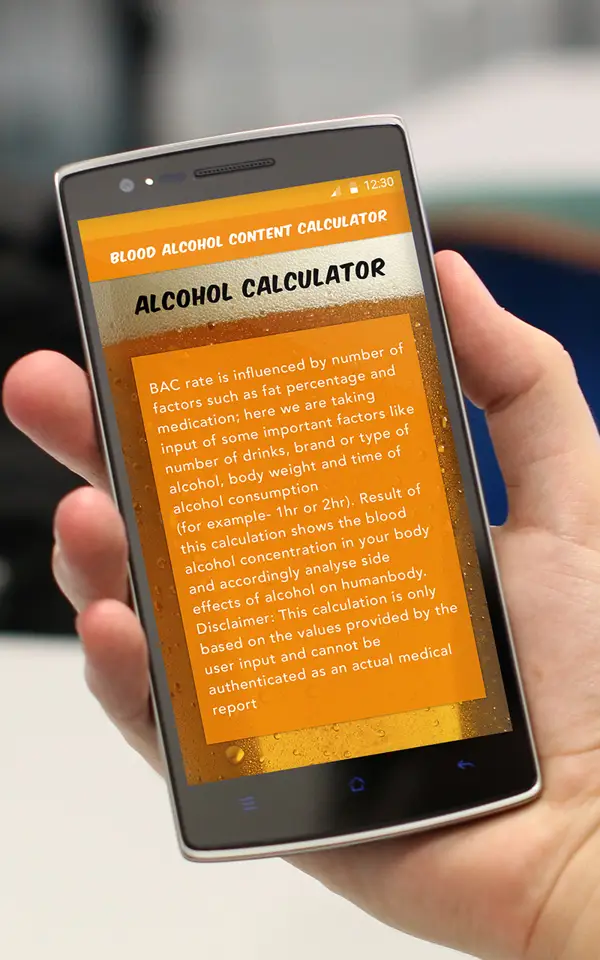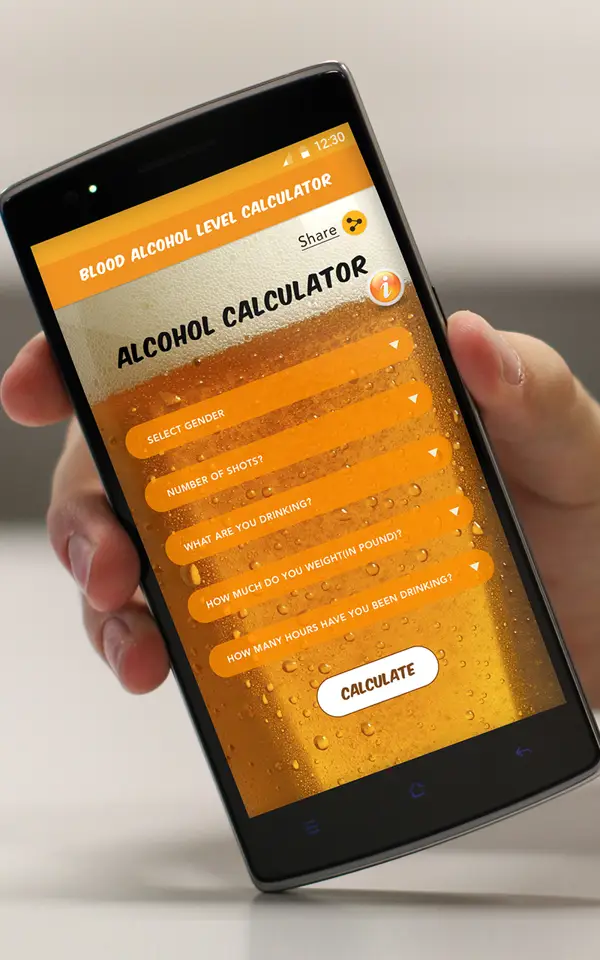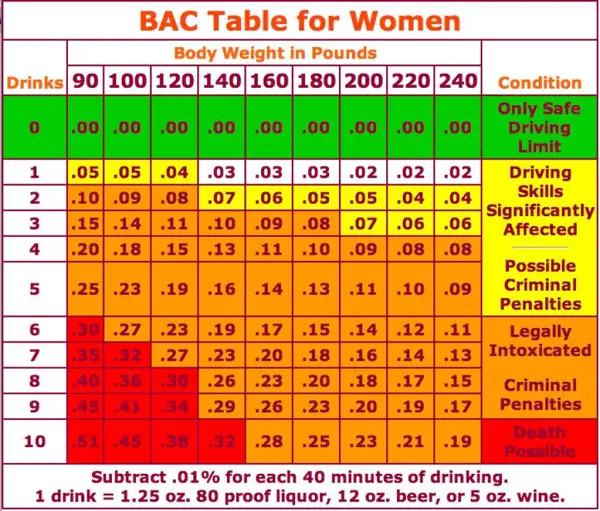Table of Contents
- What is Blood Alcohol Content (BAC)?
- How to Calculate BAC
- Legal BAC Limits
- Effects of High BAC
- What Counts as a Standard Drink?
- Factors Affecting BAC Levels
- Try Our BAC Calculator
What is Blood Alcohol Content (BAC)?
Blood Alcohol Content (BAC) is a measurement of the amount of alcohol in a person's bloodstream. It is used to determine the level of intoxication and impairment.
How to Calculate BAC
To calculate BAC, you can use a formula that takes into account factors such as the amount of alcohol consumed, the person's weight, and the time elapsed since drinking. There are also online calculators that can help you determine your BAC.
To calculate your Blood Alcohol Content (BAC) using the number of drinks you've had, you can use a BAC calculator.
1. First, gather information about the drinks you've consumed. You will need to know the type of alcohol (beer, wine, spirits), the amount in ounces, and the percentage of alcohol in each drink.
2. Input this information into the BAC calculator. The calculator will use this data to estimate your BAC level based on the number of drinks consumed over a certain period of time.
3. Remember that BAC levels can vary depending on factors such as weight, gender, metabolism, and tolerance. It's essential to drink responsibly and know your limits to prevent any risks associated with alcohol consumption.
4. Always consider factors like time, food consumption, and hydration when calculating your BAC. It's important to stay informed and make safe choices when consuming alcohol.

Legal BAC Limits
The legal BAC limit for driving is typically 0.08% in most states. Exceeding this limit can result in DUI charges and penalties.
In most countries, there are legal blood alcohol concentration (BAC) limits that drivers must adhere to while operating a vehicle. These limits are put in place to ensure the safety of all individuals on the road.
It is important to understand that BAC levels can vary depending on factors such as weight, gender, and metabolism. One way to estimate your BAC is by using a blood alcohol calculator. By inputting information such as your weight, number of drinks consumed, and the time frame in which they were consumed, you can get an approximate BAC level.
It is always safest to not drink and drive, as even a small amount of alcohol can impair your judgment and coordination. If you do choose to drink, make sure to plan ahead and have a designated driver or utilize alternative transportation options.
Remember, the legal BAC limit is typically around 0.08% for adult drivers. Be responsible and prioritize the safety of yourself and others on the road.

Effects of High BAC
High BAC levels can lead to impaired coordination, slowed reaction times, slurred speech, and impaired judgment. It can also increase the risk of accidents and injuries.
High blood alcohol content (BAC) can have various negative effects on a person's health and behavior. Using a blood 08 calculator can help individuals understand how many drinks can result in elevated BAC levels.
Excessive alcohol consumption can impair coordination, reflexes, and decision-making abilities. It can also lead to blurred vision, slurred speech, and drowsiness. High BAC levels increase the risk of accidents, injuries, and alcohol poisoning.
By inputting the number of drinks consumed and other relevant factors into a blood alcohol calculator, individuals can estimate their BAC levels and make informed decisions about their alcohol intake. This tool can help prevent the dangers associated with high BAC, such as impaired driving and risky behaviors.
Overall, understanding the effects of high BAC and monitoring alcohol consumption through a blood alcohol calculator can promote responsible drinking and prioritize personal safety.

What Counts as a Standard Drink?
A standard drink is typically defined as containing about 14 grams of pure alcohol, which is equivalent to 12 ounces of beer, 5 ounces of wine, or 1.5 ounces of distilled spirits.
A standard drink is a measure of alcohol that is used to determine the amount of alcohol consumed. It is important to understand what constitutes a standard drink in order to monitor alcohol intake and prevent alcohol-related harm.
In general, a standard drink contains about 14 grams of pure alcohol, which is equivalent to:
- 12 ounces of beer (with about 5% alcohol content)
- 5 ounces of wine (with about 12% alcohol content)
- 1.5 ounces of distilled spirits or liquor (with about 40% alcohol content)
It is important to note that the actual alcohol content in different types of alcoholic beverages may vary, so it is essential to check the labels for accurate information.
To calculate how many standard drinks you have consumed and estimate your blood alcohol level, you can use a blood alcohol calculator. This tool takes into account factors such as the amount of alcohol consumed, your weight, and the time over which you have been drinking.

Factors Affecting BAC Levels
Several factors can affect BAC levels, including the rate of alcohol consumption, the person's metabolism, gender, age, and whether they have eaten food before drinking.
When using a blood alcohol calculator to estimate your blood alcohol content (BAC) levels, it is important to consider several factors that can affect the accuracy of the results:
- Gender: Women typically have a higher BAC after consuming the same amount of alcohol as men, due to differences in body composition and metabolism.
- Weight: The heavier you are, the more alcohol it will take to raise your BAC to the same level as someone who weighs less.
- Body Fat Percentage: Alcohol is soluble in water, and because women generally have a higher body fat percentage than men, they may feel the effects of alcohol more quickly.
- Food Consumption: Eating food before or while drinking can help slow the absorption of alcohol into the bloodstream, lowering your BAC.
- Alcohol Tolerance: Regular drinkers may have a higher tolerance to alcohol, meaning they may not feel the effects of alcohol as strongly at the same BAC level as someone who does not drink regularly.

Try Our BAC Calculator
Use our BAC calculator to estimate your blood alcohol content based on the amount and type of alcohol consumed, your weight, and the duration of drinking.
Have you ever wondered how many drinks it takes to reach a certain blood alcohol level? Our BAC Calculator can help you estimate your blood alcohol content based on the number of drinks you've had.
Simply input the type and quantity of drinks consumed, along with your weight, and our calculator will provide an approximate BAC level. Remember to always drink responsibly and never drive under the influence.
Give our BAC Calculator a try and stay informed about your alcohol consumption!

Key Takeaways
- Understanding your BAC level is crucial for responsible drinking and safe driving.
- High BAC levels can impair your ability to function properly and increase the risk of accidents.
- Knowing what counts as a standard drink can help you keep track of your alcohol consumption.
FAQ
Q: How long does it take for alcohol to leave your system?
A: On average, the body processes alcohol at a rate of about one standard drink per hour. However, individual factors can affect this process.
Q: Can you sober up quickly by drinking coffee or taking a cold shower?
A: These methods do not speed up the elimination of alcohol from your system. Time is the only way to sober up safely.



Recent Comments